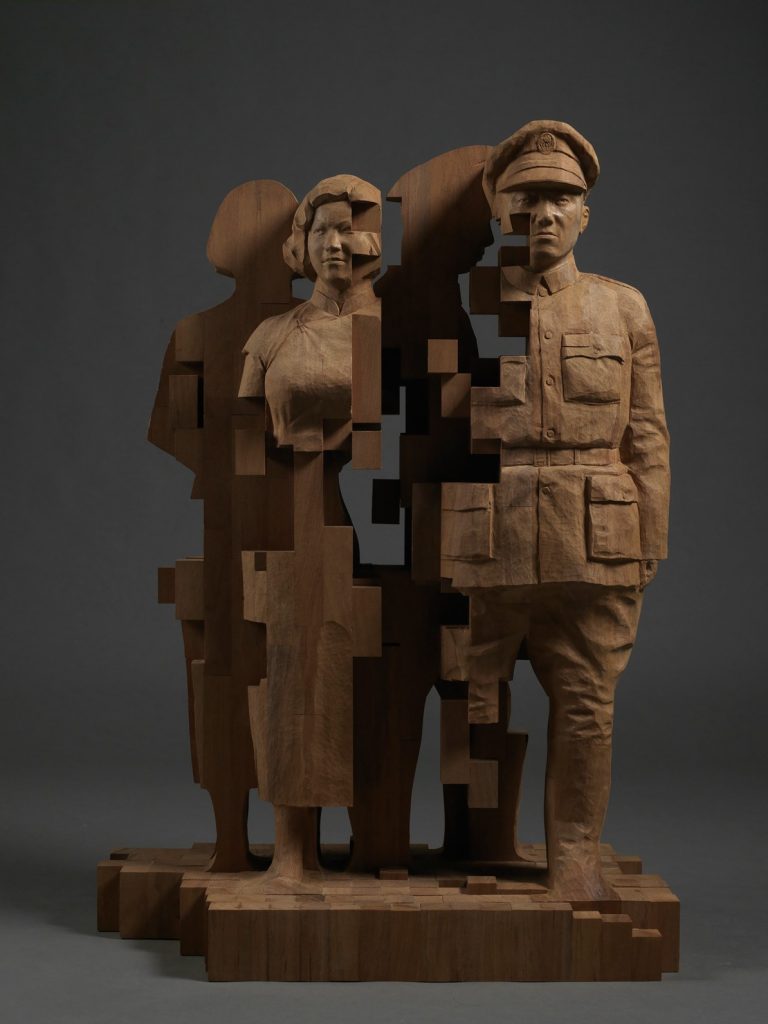Taiwanese artist Han Hsu Tung focuses on creating intricately designed wood sculptures. Tung has been an artist for three decades, in which he has created over three-hundred pieces. He was educated at the prestigious National Taiwan University as an anthropologist. Since 2015, Han has worked under the nom-de guerre Donald Harn. His works are inspired by personal feelings and the observation of social evolution and the influence of digital culture. In his early career, he focused on historical contexts, reality vs. imagination, left vs. right, and light vs. dark.
Beginning in the beginning of the twenty-first century, Han introduced his modern artwork that features the well-known pixilated and ever dispersing forms in his artwork. His work has encompassed the use of line and contrast through “pixilating” that has parallels with contemporary social evolution. He is a “master of marrying old and new” according to Jessica Stewart of My Modern Met. He began to show the transition from historical thought and design to a more contemporary technological aspect. His pieces care successful through the use of great technique and detail. He utilizes line, color, and contrast to make his pieces more impactful on the viewer.

His unique style has made him widely popular by breaking the boundary of perfected wood carvings. His pieces are extremely well crafted yet interrupted by broken fragments of digitalization. For this reason, many of his works focus on a breaking was or disappearance of some sort. He does this to get people to understand the world we live in, and how over time, we are becoming more digitalized. With his works, he believes people are losing their sense of the past and are headed for a new fully digital and broken age.

Han’s futuristic take encompasses the use of pixilating wood carvings. He puzzles together different colored wooden blocks, making some of them indented and others protruding. He plays the contrast of raw wood and finished sculpture. Many of his pieces imply the disappearance of history due to the modern digital age we live in.

Many of Han’s works give off a sense of motion. For example, the piece “Catcher” shows the movement of the wood that seems as if you can see the ball hitting the glove.

His expertise in sculpture is evident in the piece, “Chess.” The piece depicts a powerful horse standing for a knight on a chess board. The raw power of the horse is shown with intricate and smooth lines and curves, contrasted with the broken blocks of his digitalization.

With his piece, “Civil War” he reengages his 1994 “War Series.” This work shows the passing of time and shows a hint of melancholy for the man and woman in uniform. The gap shows the distance between people as well as distance between thoughts of this generation and that of the time of the piece.
The image of the influence of technology is shown through his pieces, “iFashion” and “Where is the Like?” Both show a man connected with a device, which shows the great impact that technology and social media have on people of this time and how technology shapes the way we look and think.

